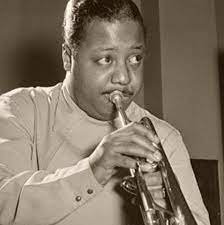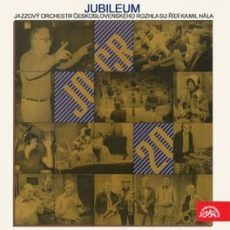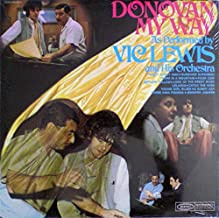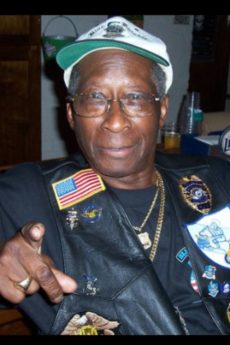
Daily Dose Of Jazz…
Billy Douglas was born on August 12, 1912 in New Haven, Connecticut. He played with Larry Ringold while young, both having been in the same boys’ institution. He played locally in his teens, then moved to New York City in 1932 as a member of Earle Howard’s band.
In 1933-34 he went on to play with Percy Nelson in Hartford, Connecticut. He then played in the South with Jimmy Gunn. Don Albert picked him up in 1934, and Douglas remained in Albert’s orchestra through 1937.
Doing freelance work for a time, he then worked with Earl Hines for several years in the early 1940s. After 1945 he returned to New Haven where he performed locally until his retirement. Trumpeter and vocalist Billy Douglas passed away in 1978.
More Posts: history,instrumental,jazz,music,trumpet

Three Wishes
Nica’s curiosity led her to inquire of Charlie Shavers as to what he would answer if given three wishes and he said:
- “Youth.”
- “Health.”
- “Happiness.”
More Posts: baroness,history,instrumental,jazz,music,pannonica,three,trumpet,wishes

Daily Dose Of Jazz…
Kamil Hala was born on August 1, 1914 in Most, Czechoslovakia. During the late Fifties he led his own orchestra. He was a member of the Czechoslovak Radio Dance Orchestra beginning in 1960, starting as a pianist and later as its arranger and conductor. After the orchestra split in 1963 he was the conductor of the Czechoslovak Radio Jazz Orchestra until the 1990s.
Pianist composer, arranger, and conductor Kamil Hala passed away on October 29, 2014 in Prague, Czechoslovakia.
More Posts: arranger,bandleader,composer,conductor,history,instrumental,jazz,music,piano

Daily Dose Of Jazz…
Victor Lewis was born on July 29, 1919 in London, England and began playing the guitar at the age of three, and dabbled with cornet and trombone. One of his early bands included George Shearing, then a teenager, among its members.
Lewis first toured the United States in 1938, where he recorded sessions with a band that had Bobby Hackett, Eddie Condon, and Pee Wee Russell. Serving in the Royal Air Force from 1941 to 1944, he recorded with Buddy Featherstonhaugh. While he was in the RAF, he met Jack Parnell and together they formed the Vic Lewis/Jack Parnell Jazzmen. He worked with Stephane Grappelli after the war and with Ted Heath soon after.
Lewis put together his first big band in 1946 to play swing jazz, but soon after its formation he began to direct the ensemble toward the sound of Stan Kenton, who gave him some of his arrangements by Pete Rugolo, Gerry Mulligan, and Bill Holman. Pianist Ken Thorne also made arranging contributions. He toured the US with the band at various intervals between 1956 and 1959, and recorded extensively for Parlophone, Esquire, Decca, and Philips.
After 1959, Vic semi-retired as a performer, only occasionally recording, but he continued to write about jazz and champion its value. He went into artist management, and oversaw the careers of photographer Robert Whitaker and the singer Cilla Black among many others.
Selling his management agency in 1964 to Brian Epstein’s company NEMS, then worked with Epstein arranging the Beatles’ international tours. Following Epstein’s death in 1967, Lewis served as managing director of NEMS. Lewis also managed Robin Gibb of the Bee Gees, and produced his debut album Robin’s Reign in 1970.
He conducted recordings of his own and others with the Royal Philharmonic Orchestra on Vocalion, which included excerpts from his Russian Suite, a Romance for Violin, and two movements (Red and Jade) from a multi-composer suite called Colours. Guitarist, bandleader, agent and manager Vic Lewis, who was awarded the MBE in 2007, continued to work in the music industry until he passed away on February 9, 2009 in Golders Green, London.
More Posts: agent,bandleader,guitar,history,instrumental,music

Three Wishes
Nica asked Frankie “Downbeat” Brown what he would wish for if he had three and he told her:
1. “A successful music career. By that I mean year~round.”
2. “That I could have my home, car, and a few dollars in the bank, so that, if I get old, I’m covered, in fact.”
3. “The third one would be for my two sons and my daughter to be successful in whatever they do. In other words: behind me.”
*Excerpt from Three Wishes: An Intimate Look at Jazz Greats ~ Compiled and Photographed by Pannonica de Koenigswarter
More Posts: baroness,drums,history,instrumental,jazz,music,pannonica,three,wishes




